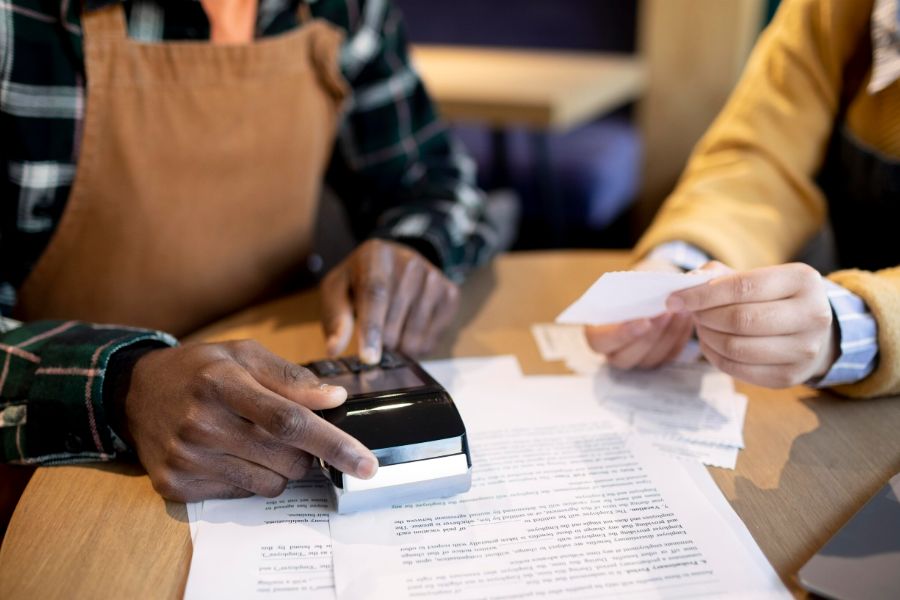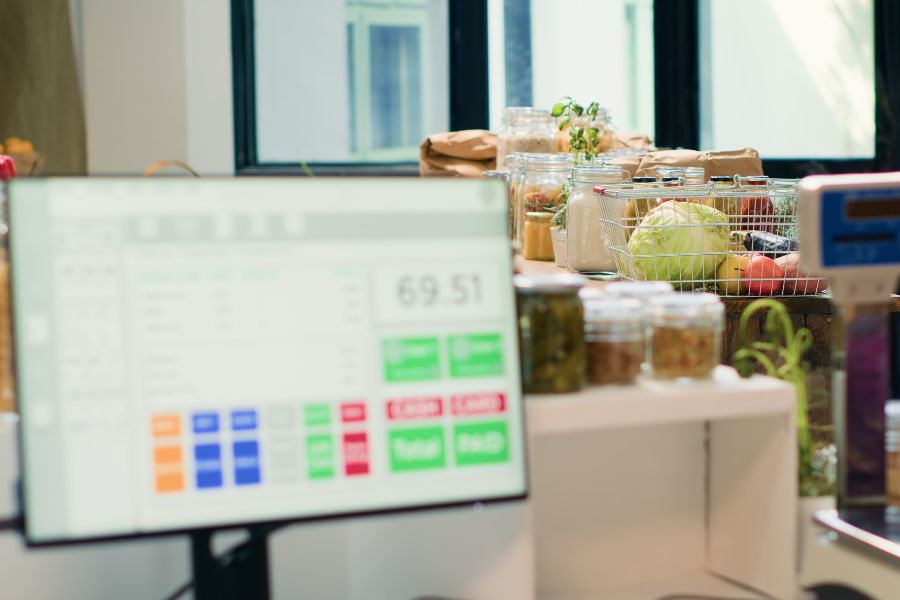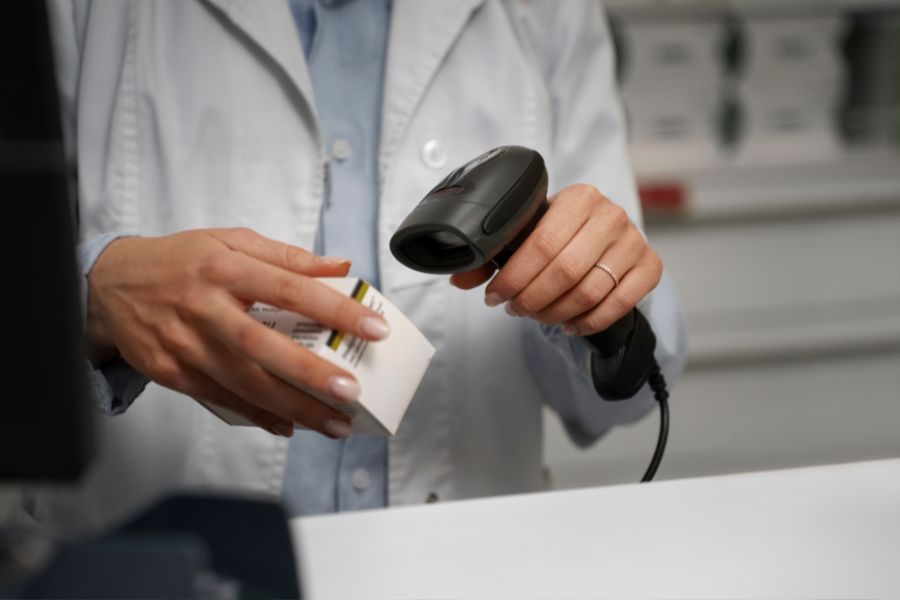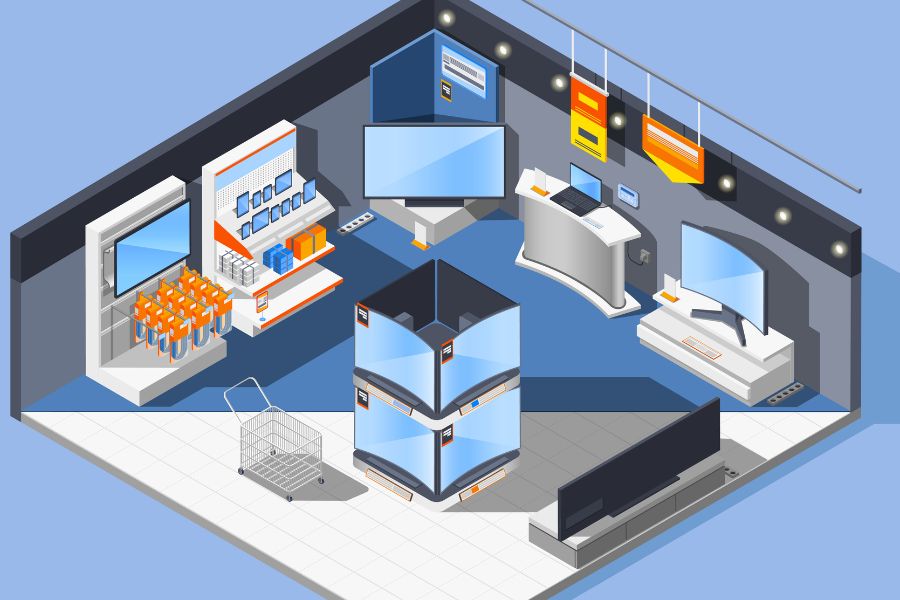Self service solutions are ideal for merchants who handle a large volume of transactions and have medium-sized baskets. However, before installing new equipment, you should thoroughly examine these self checkout statistics to achieve the desired synergies and improvements.
Key self checkout statistics every retailer should know
Revenue impact of self checkout
According to Grand View Research (2023), the global self-checkout systems market was valued at USD 3.44 billion in 2022 and is projected to reach USD 8.8 billion by 2030, growing at a CAGR of 13.6%. A separate report by Allied Market Research estimates the market could grow to USD 12.01 billion by 2032. This growth reflects ongoing investments in automation across physical retail, especially in grocery and general merchandise sectors.
The shift toward self-service is driven by multiple factors: increased in-store traffic, pressure to control labor costs, and rising consumer demand for quick and convenient shopping. Retailers are now adapting checkout strategies to match these expectations, using technology to maintain speed while reducing operational friction.
Market share and adoption rates
In the U.S., around 60% of grocery transactions now go through self-checkout lanes, according to NCR Voyix (2023). Globally, the number of self-checkout installations is projected to increase by 178% between 2022 and 2027, as retailers continue to prioritize automation in high-volume locations.
Supermarkets and hypermarkets still account for the largest share of self-checkout deployments due to their scale and transaction volume. These formats benefit from reduced queue lengths, better space utilization, and lower dependency on cashiers during peak times.
Convenience stores are also expanding their use of self-service tools, particularly mobile-based solutions. One example is OKay convenience stores in Belgium, which rolled out the “Scan.Pay.Go” mobile app to let customers scan and pay directly from their phones. Similar solutions are gaining popularity in compact retail environments, where speed and mobility matter most.
Customer demographics and preferences
Consumer usage has grown steadily across all age groups. According to a 2023 survey by PYMNTS and Toshiba, 66% of U.S. shoppers prefer self-checkout over staffed lanes, citing convenience and shorter wait times.
Adoption is still highest among younger shoppers, especially millennials and Gen Z, but interest is expanding. Around 58% of Gen X shoppers and 41% of baby boomers now use self-checkout regularly. This trend indicates a broader shift in behavior, where consumers expect faster, tech-supported checkout options regardless of age.
Self checkout and customer experience
A 2023 study from Capgemini Research Institute found that 80% of consumers favor stores that provide self-checkout, showing a clear preference for autonomy and speed. Shoppers also expect more intelligent systems that reduce steps and minimize physical contact.
Shekel Brainweigh’s recent data shows that shoppers are actively looking for features like AI-powered product recognition and contactless scanning. These systems recognize items automatically, reducing the need for screen interactions and manual input. This is especially important in grocery stores, where high-frequency purchases benefit most from frictionless checkout.
Self-checkout remains a core part of the in-store experience, with over 70% of shoppers using it regularly in supermarkets. Compared to online-only channels, physical stores that provide fast, autonomous checkout are more likely to retain foot traffic and encourage repeat visits.
How to improve your business performance based on self checkout statistics?
So, what lessons have we got from all these self checkout statistics?
Apparently, self checkout systems have become more common, but that doesn’t mean they always work well. Long queues at kiosks, unclear interfaces, and scanning errors can frustrate shoppers and slow down operations. So how can retailers make self checkout smoother and more reliable?
Common challenges with self checkout systems
Many businesses rush to install self checkout without fully thinking through customer behavior or staffing needs. This often leads to:
- Frequent interruptions when age-restricted or unscannable items require staff intervention
- Poor layout or signage, causing confusion and bottlenecks
- Inconsistent hardware performance, from slow scanners to unresponsive screens
- Limited payment options, especially in markets where mobile payments are widely used
If you don’t recognize and solve them early, these problems chip away at trust. Shoppers expect a fast, intuitive experience, and when that doesn’t happen, they’re less likely to use the system again.
Features that drive smoother transactions
Retailers looking to improve their self checkout setup should focus on three main areas:
- User interface clarity – A clean, simple screen flow helps customers complete transactions with fewer questions. Avoid cluttered menus or small buttons that lead to mistakes.
- Flexible hardware setup – The right mix of scanners, receipt printers, and payment modules should match store traffic and layout. For instance, adding scales for produce or allowing multiple kiosks in a row can ease peak-time pressure.
- Real-time monitoring – Staff should be able to monitor all active kiosks from a central screen or mobile device, so they can step in when something goes wrong without leaving their post.
Using ConnectPOS to support an exceptional self checkout experience
A strong POS system plays a huge role in making self checkout work properly, and that’s where ConnectPOS comes in.
ConnectPOS supports both traditional POS and self-service models in one unified system. This means retailers can manage checkout flows, inventory syncing, and customer data from a single platform. It also integrates with various hardware setups and supports mobile-friendly layouts, giving retailers more flexibility when designing their self checkout lines.
Better yet, ConnectPOS can be tied to real-time staff notifications. If a kiosk flags an issue, such as a restricted item or payment error, staff can step in quickly, keeping the line moving without disrupting others.
For businesses that want to combine speed with accuracy, ConnectPOS provides a setup that’s both scalable and easy to control.
In short
Self checkout has quickly become a standard expectation in modern retail. The latest self checkout statistics show steady growth in market size, widespread customer adoption across age groups, and increasing demand for contactless, intelligent systems. But numbers alone don’t guarantee success. Retailers still need the right tools and setup to keep transactions smooth, reduce friction, and meet customer expectations in real time.
That’s where ConnectPOS can make a real difference. Our solution provides the flexibility and control needed to keep your operations running efficiently. Want to see how ConnectPOS can support your self checkout strategy? Contact us today and let’s talk.
ConnectPOS is a all-in-one point of sale solution tailored to meet your eCommerce POS needs, streamline business operations, boost sales, and enhance customer experience in diverse industries. We offer custom POS with features, pricing, and plans to suit your unique business requirements.




